Natural Hair For Beginners: Everything You Need to Know

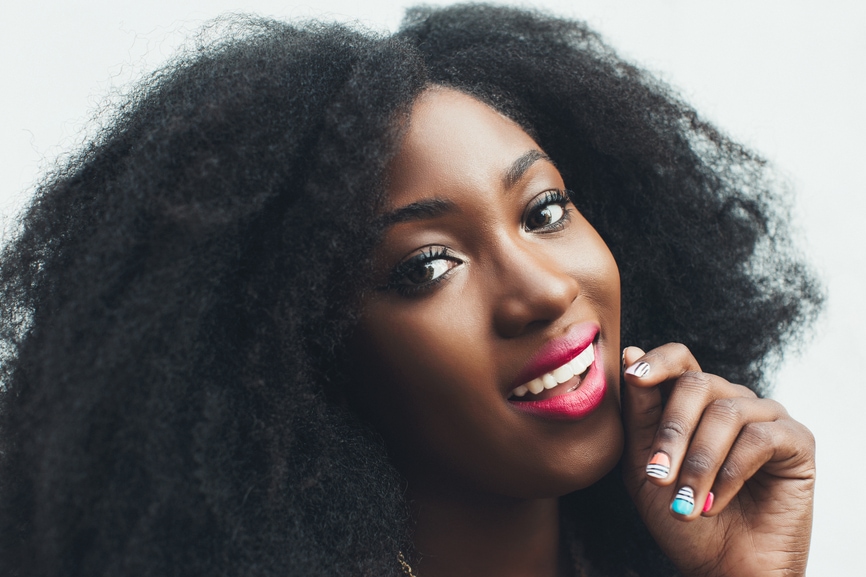
914
Shares
Share
Pin
793
Natural hair for beginners is often very complicated, confusing and honestly overwhelming. From products to styling and tools women are lost with no idea of what they should really do while embarking on their new natural hair journey.
If you are looking for a complete guide to help you transition to natural hair and achieve the growth you’ve always wanted, you are in the right place.
Mục Lục
Natural Hair for Beginners Table of Contents
If you want to skip ahead and download the full guide for your convenience click here.
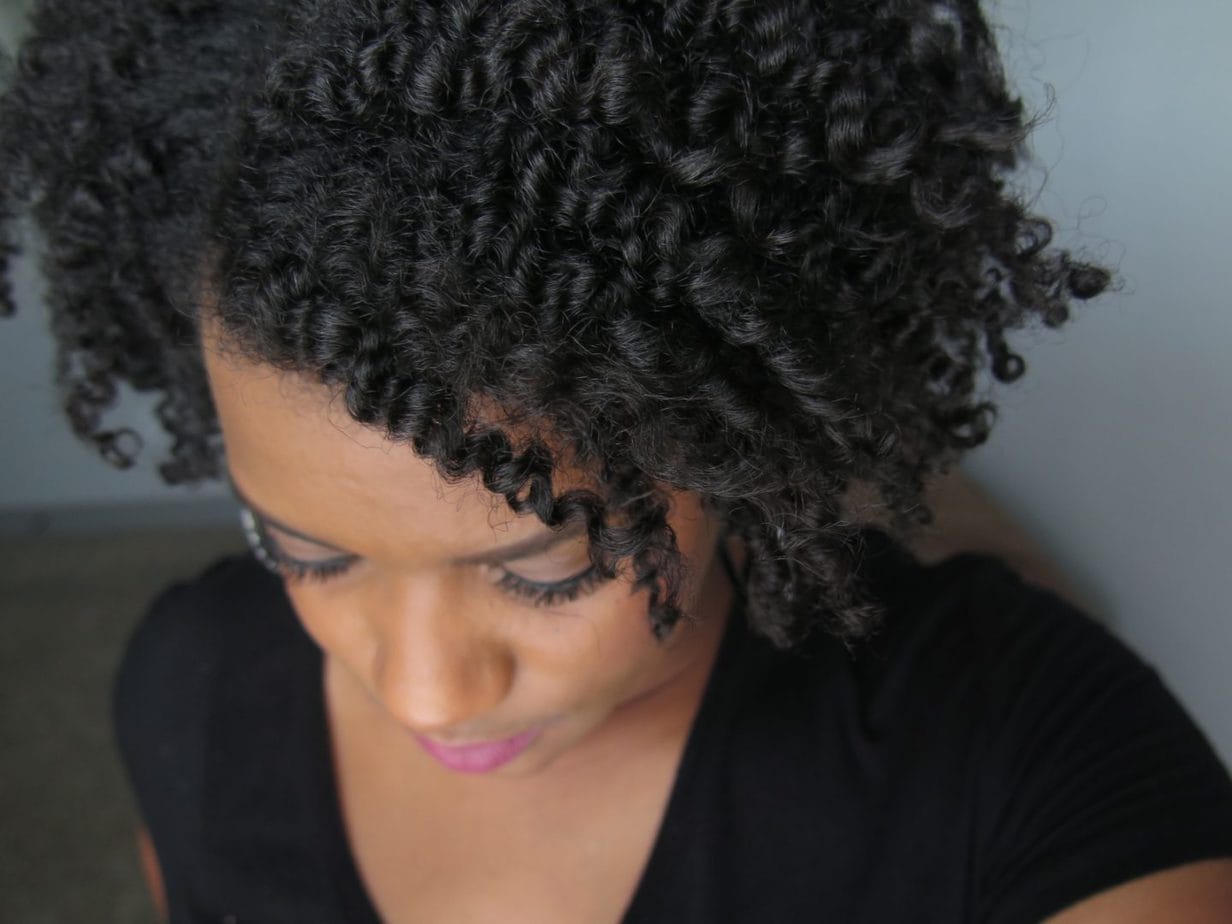
1. Dispelling the Myth Of the “Hair Types”
Originally coined by celebrity hairstylist Andre Walker, the curl typing system was created purely as a way to categorize the shape and texture for different strands of hair. The curl type pattern ranges from 1- 4 and a- c. Commonly referred hair types are 3c, 4a, 4b, etc. But, each person is capable of having multiple curl types.
While a looser curl pattern may be ideal for some, loose curls do not equate to healthier hair. There is no such thing as “good hair”. If your hair is growing and healthy, it is GOOD!
Tightly coiled hair patterns tend to be drier simply because the twists and curves of each strand make it harder for your natural production of oil to travel from root to tip.
This is also why you will find women with looser curls or straight hair shampooing their hair more frequently; some possibly every day. Their hair becomes oilier faster since the natural production of sebum (oil) is capable of traveling from root to tip quicker along the straight hair strand.
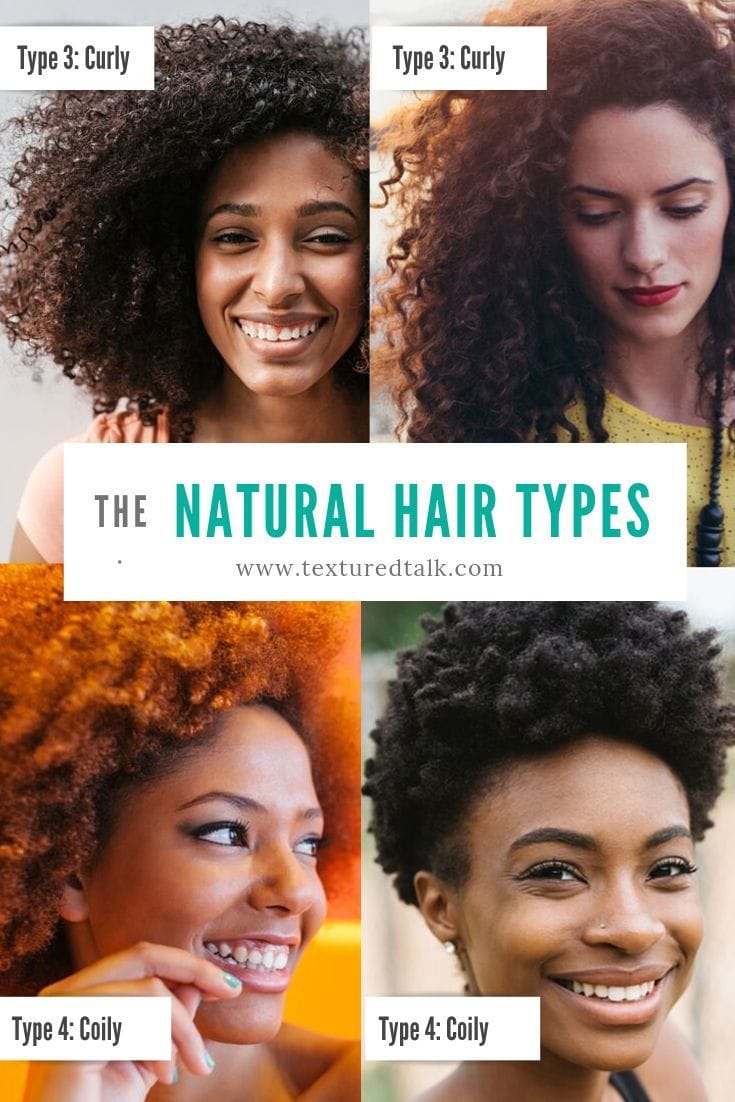
While I do believe in identifying a curl pattern for inspiration purposes, our curls are more than just a number and letter. Texture, density, porosity, and elasticity truly identify your hair type.
2. Understanding Texture & Porosity
TEXTURE: Texture describes the width of each individual strand of hair you have. Hair textures are classified 3 ways: Fine, medium or thick. You’ll often find people refer to thick hair as coarse – especially women categorized in the 4C category. Because fine textures are delicate this texture is also more prone to breakage.
DENSITY: Density relates to how many individual strands of hair you have in total. An easy way to think of this is how many strands you have per square inch. Extremely dense hair can easily achieve big voluminous styles simply because the hair is more compact per square inch.
POROSITY: Porosity describes your hair’s ability to absorb moisture. I strongly believe this is one of the most important things to know about your natural hair.
ELASTICITY: Elasticity measures the “stretchiness” of your hair. If your hair has a hard time stretching when wet and does not return to its natural state after pulling, your hair more than likely has low elasticity.
Low elasticity also will result in increased breakage because the hair is so fragile. Research shows elasticity cannot exist when there is an imbalance of moisture and protein.
3. Transitioning to Natural Hair
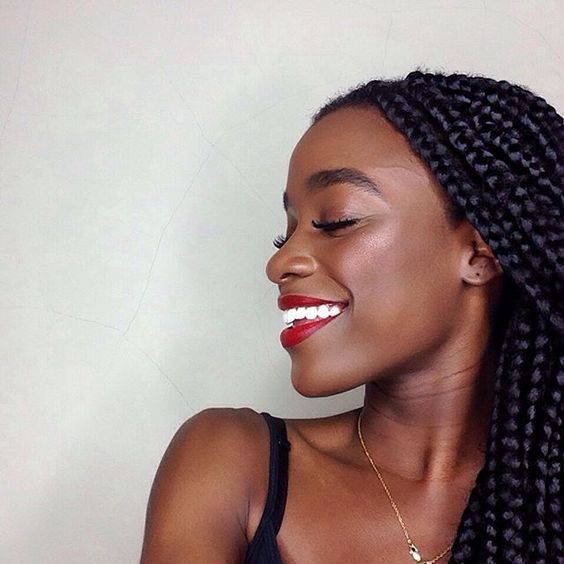
If you’ve made it this far you have decided to commit and transition to natural hair. Transitioning can be extremely frustrating, so much that several women just throw in the towel and quit. Don’t give up, we’ve all been there!
While the natural hair and curls look fabulous on Instagram, there are still a few key things you should understand before embarking on this journey. I want you to be fully prepared.
Your hair probably won’t look like your favorite blogger, Youtuber or Instagram star no matter how many products you try. We were all born with unique and different textures. Embrace it and learn to love your hair for what it is….not what you THINK it should look like.
You will still have to worry about the weather and rain.
Especially if your products are full of glycerin! Glycerin at the core is a type of humectant, which means it attracts moisture to itself. While glycerin has an immense ability to attract moisture to the hair it also has the reverse effect.
Everything is about balance. On extremely humid days too much moisture can be attracted to your hair causing the hair to swell and frizz. However, on low humidity days (cold, dry days) where the surrounding air is more dry than your hair, the opposite occurs. Moisture is drawn from the hair back into the air to balance the moisture in the atmosphere. Pick your products wisely!
The time spent taking care of your hair will increase…BIG TIME.
I’m not going to sugar coat this. Natural hair is a lot of work! If you are transitioning or considering going natural be prepared to dedicate a little more time giving your strands some TLC.
Naturally, curly hair is prone to be dryer simply because the natural oils your body produces works a little harder traveling down the twists and turns of your hair shaft – from the scalp to your ends. As a result, you will and should spend more time ensuring your hair is properly moisturized daily.
Leave in conditioner will and should also be your best friend! In addition to battling dryness, I had no idea the amount of time I would spend paying special attention to properly detangling my hair, researching and purchasing products and testing new styles.
Failing to plan, is a plan to fail.
The last and most useful thing you should know before going natural is that planning is so important. When I first went natural I definitely thought I would be able to hop in the shower, wash my hair and course go. Not at all.
I was faced with a harsh reality when that did not happen. Don’t be fooled by the name “wash & go” and don’t be discouraged if your hair isn’t able to do exactly that. Just plan ahead if you want to rock that style. Similar to other things in life, failing to plan is a plan to fail.
Want a gorgeous twist-out for a big day? Twist your hair and allow sufficient time for the hair to COMPLETELY dry for the best result.
Styling Options While Transitioning
Opt for low heat styles that will last longer without much daily manipulation such as roller sets, perm rods or flexi-rods and updos that will protect your ends.
Heavy manipulation leads to breakage and during transitioning this is possible because your strands are weaker at the point where your relaxer ends and natural texture begins. This area is called the line of demarcation.
Less daily manipulation is better. Protective styles are also a great style to wear while transitioning to natural hair. Braids, wigs, traditional sew-in options are all effective as it allows you to give your hair a break. Pay special attention to your scalp while wearing any protective style to promote ongoing healthy hair growth.

4. Moisturizing Natural Hair 101
A natural hair for beginners guide wouldn’t be complete without talking about moisture! Besides hair growth, moisture is by far the number one area women struggle with in terms of their natural hair. If you are a new natural or in the process of transitioning, this may come as a shock to you but…it is OK to moisturize your hair every day.
This does not mean shampooing and conditioning every day but, pure and simple moisture. The confusion comes into play when women THINK they are moisturizing their hair but, the hair is still dry and brittle.
Remember: OILS DO NOT MOISTURIZE
If you want to achieve moisturized natural hair follow these steps:
Step 1: Increase Moisturizing Frequency (Morning, Noon & Night)
Moisturizing your hair once in the morning may not be enough. Again, curly hair is naturally prone to be drier than other textures because the sebum has to work 3 times as hard to get from our root to ends due to all the curves along the strand. I’ve mentioned this 3 times now in this guide, so clearly it is important.
Use a daily moisturizing lotion in the morning and gently mist your hair with water at night. The main take-away is moisturizing once or twice a week isn’t going to do the trick. You must moisturize daily and even multiple times a day if needed.
Step 2: Deep Condition More
Deep conditioning is another option where changing the frequency is possibly needed. Hair that is extremely dry and breaking should start on a weekly moisturizing deep conditioning regimen.
Step 3: Don’t Confuse A Moisturizer With A Styler
Another common mistake several new naturals make is confusing a styling product with a moisturizer. While there are a few products that work as double duty action, products like gels, curling custards, foaming lotions, and mousses should not act as your daily moisturizing product.
Stylers are mainly formulated for hold and definition first. A moisturizing product should still be used in conjunction with these items as you will see in most product lines. Use products where water is the first ingredient on the label.
Step 4: Understand the L.O.C Method
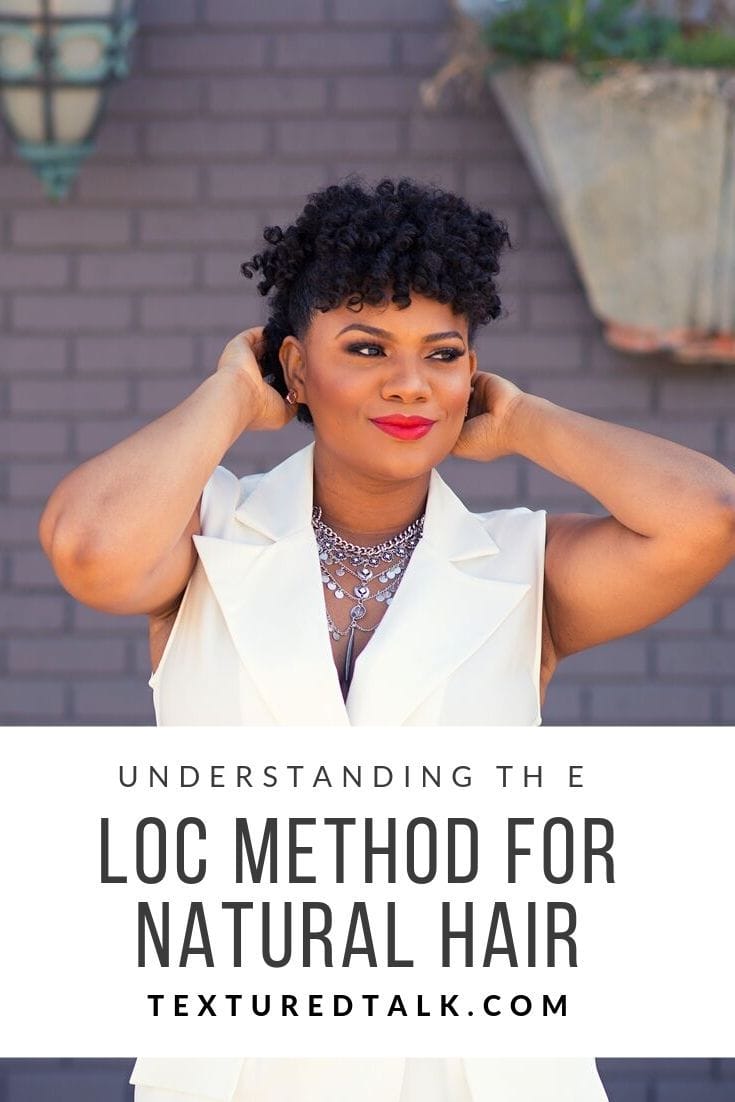
LOC is an acronym for Liquid. Oil & Cream. It is a 3-step product application process used to seal moisture into the hair by layering products in acronym order.
The liquid product serves as a foundation for moisture. Oil is used second during the process as a way to seal the moisture into the hair. The 3rd and final step C, for cream, is used for styling and definition and can also be used to further seal moisture into the hair.
Some women even choose to apply products using L.C.O. method and switch the order around. Try both and stick to what works best for your hair.
Step 5: Seal Moisture for YOUR Hair Type
Another key to obtaining moisturized natural hair is ensuring you are sealing moisture for YOUR hair type. Using the L.O.C method is great but this is pointless if your leave-in conditioner, oil, and cream do not work for your texture.
Every curl type and texture is different. For thicker coarser textures heavy butter-like products sometimes work best. Shea Butter, Mango Butter, Avocado Butter, and Cupuacu Butter are a few of the more popular ones that seal moisture into the hair extremely well.
For less dense and thinner textures, light gels and oils seem to do the trick.
Step 6: Cleanse Hair & Scalp More
Clean hair is another way to achieve more moisturized natural hair. Why? Because cleansing the hair and scalp on a regular basis will ensure product build-up is removed which, in return enables your products to work better and allows moisturizing products to actually penetrate the hair and scalp.
If you co-wash often, product build-up will happen and a clarifying shampoo is suggested for use at least monthly. Shampooing your hair every 5-7 days will remove build-up, sweat, and environmental elements. Even if you adopt the Curly Girl Method, a nice clarifying shampoo is still needed as part of your regimen.
Step 7: Drink More Water
Of course, this one is a no-brainer but as you’ve probably heard before, healthy hair starts from the inside. If your body is dehydrated your skin and hair will follow.
Whichever way you choose to take care of your skin, think of some of the same characteristics for your scalp. The common rule of thumb for daily water intake is half your body weight. For example, I am 160 lbs, therefore; I would drink 80 oz, or about 5 bottles of water per day.
Step 8: Understand Porosity (Continued)
Porosity is the hair’s ability to absorb moisture. To test your porosity you will need a few strands of hair and a glass of water.
Place the strands in the glass of water and wait about a minute or two. Check the glass of water. Did the hair float and stay at the top of the water? Then you have low porosity.
Did your hair sink to the bottom of the glass? Then you have high porosity.
Did your strands stay somewhere in the middle? Then you have medium porosity.

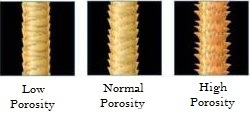
High porosity hair tends to be damaged either from chemical processing, excessive use of heat, environmental changes or surroundings. The hair strands itself will have gaps or holes in the cuticle which holds very little moisture.
Medium porosity hair tends to be low maintenance and is able to retain moisture well. It looks healthy and resilient.
Low porosity hair tends to be tightly compacted and repels moisture when wet. This type of hair is healthy and shiny but can be prone to protein buildup.
5. The Importance of Protein-Moisture Balance In Natural Hair
While researching natural hair for beginners information, few people discuss the importance of protein-moisture balance. In short, a protein called keratin helps to make up the hair strand. Depending on your hair care regimen, diet, and lifestyle, a lack of protein can translate to your strands.
Healthy hair is ultimately a combination of great protein/moisture balance. Too much moisture can result in weak, limp hair that is prone to breakage. Too much protein, also known as protein overload, will cause your hair to snap and break as well. Everything in life is about balance and moderation. Your hair is no exception.
Elasticity measures the “stretchiness” of your hair. If your hair has a hard time stretching when wet and does not return to its natural state after pulling, your hair more than likely has low elasticity. Research shows elasticity cannot exist when there is an imbalance of moisture and protein.
Rotating between protein and moisturizing deep conditioners every week can help your hair flourish. Check for ingredients in your deep conditioners such as hydrolyzed wheat protein, hydrolyzed keratin, and hydrolyzed silk protein, which will help restore the needed balance and repair weakness all in one step.
Usually, conditioners with protein will have the following keywords in the title of the product:
- Repair/Repairing Cream Reconstructor
- Balancing Conditioner Deep Repair Mask
Conditioners with protein will also have a few of these common ingredients:
- Hydrolyzed wheat protein
- Hydrolyzed keratin
- Hydrolyzed silk protein
- Hydrolyzed Oat Flour
- Keratin
- Variations of hydrolyzed collagen
- Variations of hydrolyzed soy protein
6. Understanding Ingredients in Natural Hair Products
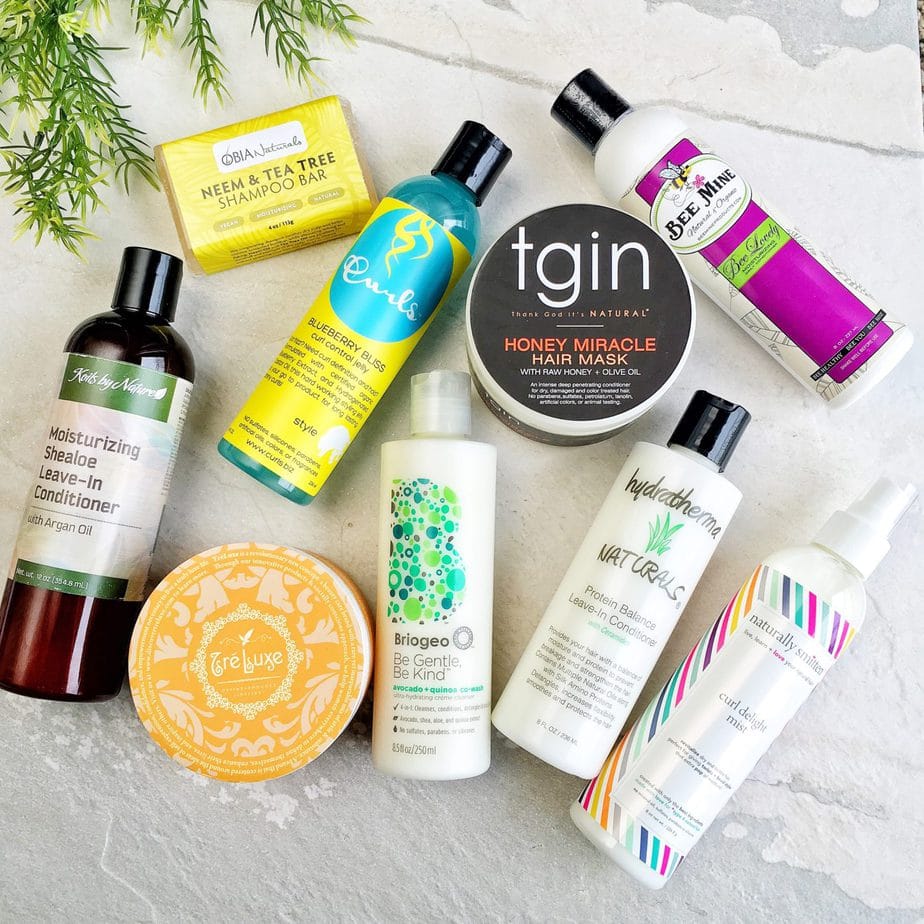
As we just discussed protein ingredients in the last section, moving on to understanding other ingredients in natural hair products is the perfect segway.
What’s really inside natural hair products and how does it affect your hair? Often, we gravitate to what sounds great on the front of a label. But the proof is in the pudding aka the ingredients.
Paraben-free. Sulfate-free. Silicone-free. Yes, we’ve all seen these words plastered across a lot of products but what does this stuff really mean?
What is a sulfate?
Sulfate in the most general form is detergent. Sulfates are found in hand soaps, dishwashing products, laundry detergents and yes shampoos. Sulfates have grown to get a very bad reputation because they completely strip the hair and leave behind a rough, brassy-like feeling to your stands.
Although this could work in your favor to remove extreme product build-up, there are moisturizing sulfate-free options that will still allow you to have a great cleanse like the TGIN Moisture Rich Sulfate-free Shampoo or the Obia Naturals Neem & Tea Tree Shampoo Bar. If you do choose to use a shampoo that contains sulfates, following with an intense deep conditioning treatment is definitely a must-do.
What is a paraben?
Parabens, in simple terms, are a class of preservatives widely used in the cosmetics industry due to their ability to limit the amount of bacteria growth, mold, and yeast in products. Due to this reason, it is common to find parabens in moisturizers, lipsticks, and shampoos as parabens are also odorless, tasteless and colorless.
But the list does not stop there. Parabens are one of the most widely approved and used preservatives also found in our daily consumer goods such as lotions, deodorants, and hand soap. So what is the big deal?
According to an article by Sister Scientist, in 2004 the Journal of Applied Toxicology was the first to report the appearance of parabens in breast cancer tumors. Since then and due to other reports curly women have been avoiding parabens like the plague; however, further research is definitely needed.
As of today, there has been no definitive link of parabens to breast cancer, just claims in multiple studies. This does not mean you should not avoid parabens if you feel strongly about this issue. As with any other health claim, do your research before making a definitive decision.
The good news is there are tons of amazing hair care brands to choose from now formulated without parabens.
Mineral Oils vs. Natural Oils
The main drawback with mineral oil is that it does not penetrate the hair shaft. The oil simply coats the hair, without providing any additional nutrients.
Due to this coating, it is harder for moisture to enter the hair and similar to silicones a great shampoo session is needed to cleanse the hair after using. Simply co-washing after using mineral oils will only do so much. Remember products always work best on freshly cleansed and clarified hair.
Natural oils like argan oil, avocado oil and coconut oil with low molecular weight actually penetrate the hair strands while nourishing the hair and scalp key vitamins like vitamin E.
Silicones & Natural Hair:
Silicone is an ingredient that has received a bad reputation in the curly hair community, however; this key ingredient could actually work in your favor. Commonly used in hair care products due to their ability to make the hair feel silky, smooth and provide amazing slip, this powerful ingredient is also found in some of my favorite brands.
In addition, they provide a light coating on the hair, which is another reason silicones are a main ingredient in the formulation of heat protectants.
The main thing you should understand is the difference between water-soluble and water-insoluble silicones. Silicones, in general, are known to create product build-up and stick to the hair, which is the primary reason it has a bad reputation.
Water-insoluble silicones require a deeper cleansing with a sulfate-containing or clarifying shampoo to remove the silicones from the hair after perpetual use. To some women, this may or may not be a big deal. With water-insoluble silicones, a clarifying shampoo is best to really open the hair cuticle and immensely cleanse the hair and scalp.
If you use products with water-soluble silicones, rinsing the hair with water milder shampoo options or simply using a cleansing co-wash works just fine. If you prefer the great slip and prefer to use silicone heavy products often, look for water-soluble silicone ingredients to reduce your risk for product build-up.
Here is how to identify the difference between the two. Examples of Water-Soluble Silicones: The best way to identify these ingredients is to look for the key letters PEG or PPG. Some common examples are:
- Dimethicone copolyol
- DEA PG-Propyl PEG/PPG-18/21
- Dimethicone
- Dimethicone PEG-8 Phosphate
- Dimethicone-PG Diethylmonium Chloride
- Hydrolyzed Silk PG-Propyl Methylsilanediol Crosspolymer
- Hydrolyzed Wheat Protein
- Hydroxypropyl Polysiloxane
- PEG/PPG-20/15 Dimethicone
Examples of Water-Insoluble Silicones
- Dimethicone
- Dimethiconol
- Phenly Trimethicone
- Amodimethicone
Good Alcohols vs. Bad Alcohols
The word “alcohol” might sound scary but not all alcohols are created equal so don’t run away just yet. General store-bought, isopropyl alcohol (rubbing alcohol), should not be used on the hair as it is too drying so you won’t see that on a label anyway.
Fatty alcohols are considered “good” because they often provide slip to our favorite conditioners. Here are the most common alcohols you will see:
Fatty Alcohols that Provide Slip:
- Behenyl alcohol
- Cetearyl alcohol
- Cetyl alcohol
- Isocetyl alcohol
- Isostearyl alcohol
- Lauryl alcohol
- Myristyl alcohol
- Stearyl alcohol
Common Scientific Names Listed as Ingredients in Natural Hair Products
Now on to some of the hard to pronounce ingredients. Don’t be fooled by these scientific names. Clearly, as you can tell these are some of our favorite oils and butters.
- Butyrospermum Parkii (Shea Butter)
- Cocos Nucifera (Coconut) Oil
- Ricinus Communis (Castor) Seed Oil Helianthus Annuus (Sunflower) Seed Oil
- Prunus Amygdalus Dulcis (Sweet Almond) Oil Mangifera Indica (Mango) Seed Butter
- Olea Europaea (Olive) Fruit Oil Aloe Barbadensis (Aloe Vera) Panthenol (Pro-Vitamin B5), Tocopheryl Acetate (Vitamin E)
7. How to Grow Natural Hair & Retain Length
The first thing you should know is hair grows on average half an inch per month. Understanding the hair growth cycle will enable you to have a scientific picture of how growth actually works. There are 4 phases of the hair growth cycle:
Anagen
Categen
Telogen
Exogen
Main
Growth Phase
Transitional
Phase
Resting
Phase
Old
Hair rests, new hair begins to grow
New
Hair Phase
Old
hair sheds, new hair continues to grow
Duration:
3-5 Years
Duration:
10 days
Duration
3-4 Months
Continuous
While hair will normally grow every month, many women struggle with retaining length. That is indeed the hard part. Retaining length means you are properly maintaining the half-inch of hair growth each month to see a considerable difference over time.
Many women have an issue with retaining length because they are unaware of how continuing certain bad habits can lead to breakage. Here are a few tips on how to retain length during your natural hair journey.
Time needed: 30 days.
How to retain length as your natural hair grows
- Consistent Trims (and possibly a real hair cut)
Ever heard of the phrase “trimming your hair makes it grow faster:? Well, that’s not exactly true. What the saying really means is trims enable you to retain growth because split ends and dead hair is removed.
The rate of hair growth doesn’t magically speed up after a trim, but the amount of hair breakage is dramatically reduced. As a result, the rate of hair growth and breakage is not counter-acting each other in what I like to call the one step forward and two steps back syndrome.
Many women are a fan of the “light dusting” trim method trying not to sacrifice length. But you must cut off all the damage to set a healthy foundation for growth. Ask your professional stylist how often you should trim. I like to trim once a quarter but hair needs vary.
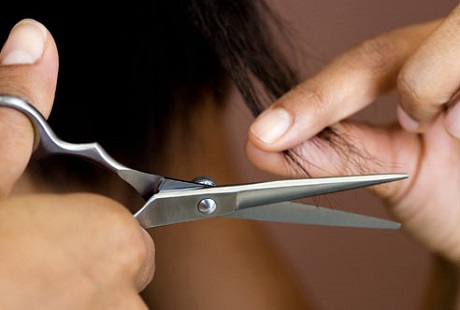
- Proper Detangling
Although frustrating, the best thing you can do when detangling is SLOW DOWN. Do not rush through this process as you may cause further breakage to your strands and please do not dare attempt to detangle on dry hair.
Instead, opt for pre-pooing to help with manageability and invest in good conditioner with a great slip so those single strand knots are able to melt away. Great detangling tools include the Tangle Teezer and Felicia Leatherwood Detangling Brush.
- Improve Your Hair’s Elasticity (Yes Shrinkage is A Good Thing!)
Elasticity is best defined as your hair’s ability to stretch and return to its natural state. In-elastic hair occurs when bonds that lie beneath the hair cuticle are interrupted by either harsh chemicals, heat damage, excessive dryness or excessive water contact also known as hygral fatigue.
All of these actions can lead to limp, weak hair and when stretched beyond its limits literally snaps. Reconstructive treatments like Affirm’s 2 Minute Keratin Re-constructor or other reconstructing protein treatments assist with improving elasticity. Ouidad’s Curl Recovery Melt-Down Extreme Repair mask is also a great conditioning option.
Not a fan of protein treatments? Simply implementing a deep conditioning regime is a great first step in the right direction. Properly moisturized hair is less susceptible to breakage and you will find over time your strands remain moisturized for longer periods of time.

- Protective Styling
Continuing the conversation of breakage, protective styling decreases the amount of daily manipulation to the hair. With the emergence of crochet braids, wigs, and naturally curly weave styles the possibilities are endless.
Naturals are no longer boxed into a category of wash and go or twist-out. Take advantage of these fabulous options and give your hair a break.
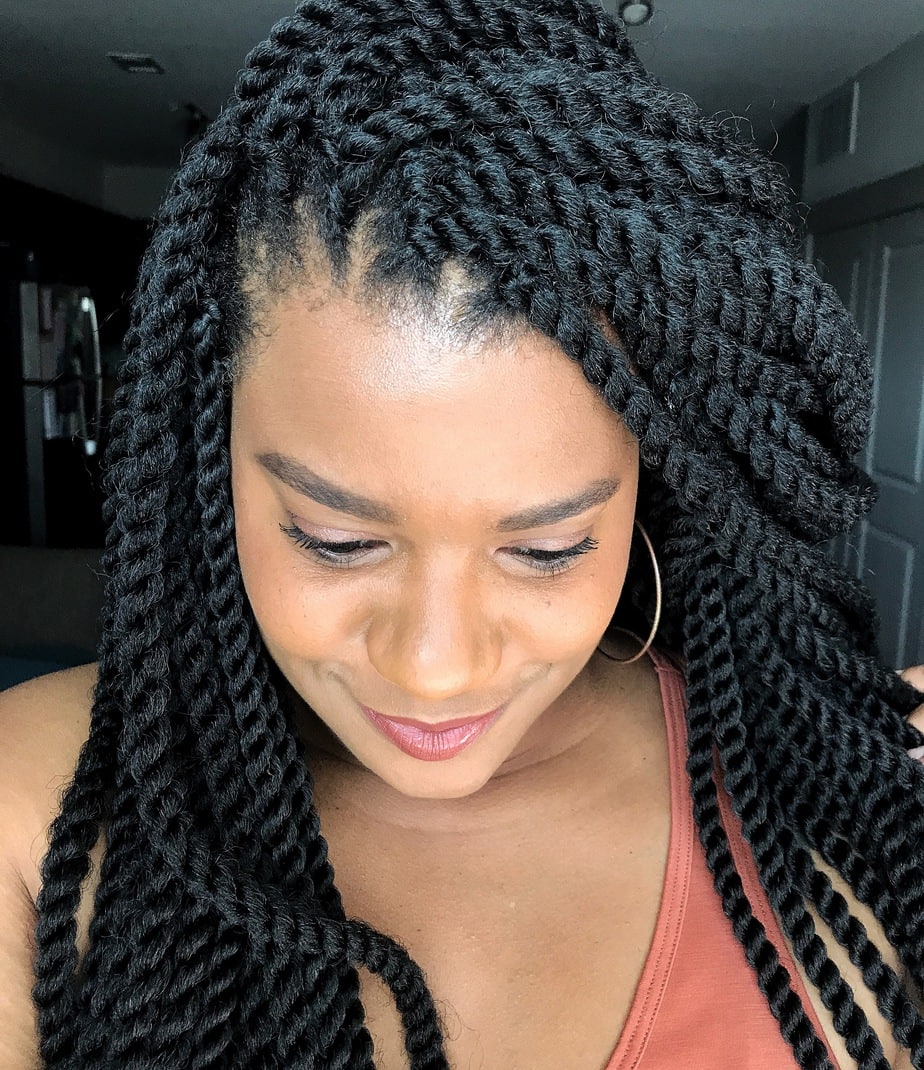
8. Healthy Eating for Healthy Hair Growth
Healthy hair starts from within so your diet and lifestyle are one of the most important tips within this guide. Foods such as salmon, tuna, darkly leafy green veggies, flax seeds, chia seeds, and walnuts are all packed with Omega-3 fatty acids.
Omega-3 fatty acids are one of the “good fats” that our bodies need in order to be healthy and is also a source of the body’s natural lubricants for the scalp to promote healthy hair growth. Omega-3s are said to encourage the Anagen growth phase and reduce hair loss during the shedding, Exogen phase.
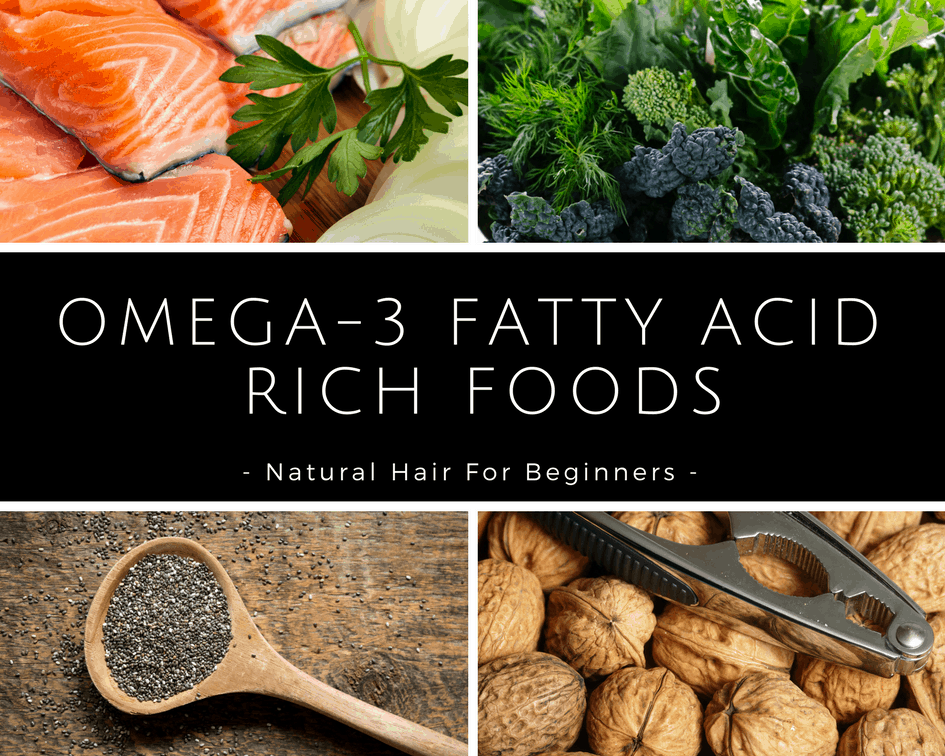
Of course, the lack of omega-3 fatty acids has bigger complications outside of the hair. They are also needed to ensure overall health and aid in maintaining a healthy cardiovascular system.
Another option is to take daily fish oil supplements, general multi-vitamins or healthy hair supplements. Love green smoothies? Drop a teaspoon of chia or flax seeds in your recipe. Trust me, you can’t even taste them, which makes eating it easier to consume in your daily diet.
Other factors that may contribute to hair loss:
- Stress
- Medications/Treatments
- Birth Control
- Unhealthy/unbalanced diet
- Hormonal Changes
- Sleep Deprivation
- Family History
- Harsh Weather Conditions
9. How to Choose A Natual Hair Salon
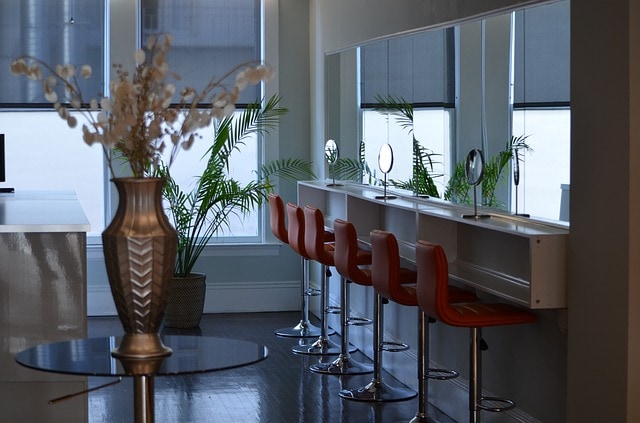
Finding a new stylist to care for your natural hair is probably one of the most daunting tasks in your natural hair journey. Unfortunately, texture education is not widely taught in traditional cosmetology schools.
Here are a few questions you need to ask and things to consider when choosing a natural hair salon:
1. The Power of Hashtags:
The power of hashtags is incredible. I have found several makeup artists and hairstylists simply by hashtag search via Instagram using #dallasstylist #dallassalon and so forth.
However, you must also go the extra mile. Once you find a stylist and come across their page do not stop at the first beautiful picture you see. Keep investigating to get a trend of the type of hair service that stylist shares the
most.
Also, check to see the other hashtags used by the stylist, which usually gives a little more detail behind the actual hairstyle in the photo.
Do you only see blowouts and silk presses?
Does the person only specialize in weaves and sew-ins?
Like it or not, social media is a walking marketing campaign for certain professionals. If there are limited pictures of the stylist offering natural hair services either walk away or go to step two.
2. Ask If the Salon or Stylist Offer Consultations:
Let’s face it, going to a new stylist is just flat-out scary. You are trusting your crown and glory into the hands of a professional you barely know. To ease your fears, ask if the salon or stylist offers consultations, either in person or over the phone.
Having the opportunity to clearly talk through the services you want, your past hair issues and your end expectations can save a lot of time and money. Also, by going into the salon you can get a sneak peek of current clients, the vibe of the salon and how the salon operates. This is always a plus!
3. Ask About Their Tools & Styling Process
Call me crazy but before trying a new stylist I have tons of questions about everything from the product line used to the brand of the styling tool. You should be well equipped with information before sitting in the chair so there are no surprises.
Additionally, knowing if a stylist uses a ceramic or titanium flat iron can be the difference in your curls experiencing heat damage depending on your texture.
4. Traditional Reviews
Although we live in a social media-driven world where pictures sell the story, traditional reviews still hold a ton of value. Exhaust all of your review resources from Yelp, Google reviews, Style Seat and Facebook when looking for a natural hair salon.
More importantly, reviews may be able to give you a more robust and in-depth review of a wide range of people. For example, there are thousands of women who do not post Instagram pictures, have a blog or create Youtube videos for their reviews. Writing a traditional review is quick and to the point. People on Yelp do not hold back so you are pretty sure to get a very honest opinion.
10. How to Care for Natural Hair Daily & Develop A Regimen
Ok and finally now to the information you REALLY want to know! How should I take care of my hair daily, weekly and monthly for healthy hair growth?
Daily:
Caring for your natural hair daily really depends on your style of choice. However, moisturizing your hair daily is a great way to begin healthy hair practices. Remember: moisturizing doesn’t mean completely saturating your hair with water daily. Here are some daily moisturizing options:
- Spray Bottle or Refresher Spray Product.
- Lightly spritz hair and follow up with oil of your choice.
- Daily Moisturizing Hair Milk or Hair Lotion. Apply a quarter-size amount to hand and evenly distribute. Remember the goal is not to completely saturate the hair – unless needed.
- Moisturizing hair butter and/or cream. Applied the same as above.
Weekly:
Pre Poo:
Apply a treatment before shampooing with any natural oil
(Coconut Oil, Olive Oil, Avocado Oil, Castor Oil, Jojoba Oil or
a mix of all). Pre-pooing helps with detangling and managing
the hair. It also helps to provide more moisture retention
during the shampoo process.
Shampoo & Condition:
Use a hydrating sulfate-free shampoo to cleanse with lukewarm water weekly and use a clarifying shampoo once a month depending on your level of product build-up.
Clarifying shampoos have a higher pH level to gently open the hair cuticle and remove dirt, buildup and environmental elements and are greatly needed to ensure a healthy scalp. Do NOT use hot water as it is too harsh on the hair.
Deep Condition (weekly for extremely dry hair):
Sit under a hooded dryer or steamer for 20-30 minutes to deep condition. The use of mild heat helps further open the hair cuticle to moisturize.
For extremely dry textures once a week is suggested; otherwise 2 times a month is optimal. Use a product that explicitly states DEEP conditioner, intense treatment, or masque/mask.
There is a difference between regular conditioners and deep conditioners. They are not the same and are not intended to serve the same purpose.
Apply Leave-in Conditioner Before Styling:
Even if you choose to skip the pre-poo and deep conditioner, my advice is to always use a leave-in conditioner. The product can be as light or as heavy as you want and will help to give extra moisture and protection during daily styling.
Leave-in conditioners can also be used every 2-3 days to add extra moisture to dry hair.
Once A Month:
Protein Treatments/Protein Conditioners:
If your hair needs extra strengthening, feels weak due to low elasticity or is severely damaged, protein treatments are great for naturals, transitioning naturals and especially relaxed & color-treated hair. There are several protein treatments, such as re-constructors, protein packs, light protein treatments, and deep penetrating treatments.
Light protein conditioners and deep conditioners are OK to use weekly. Reconstructors and protein packs should be used more sparingly like once a month in order to preserve your protein-moisture balance.
Every 8-10 Weeks (Or Once A Season)
Trims are an essential function of retaining length. Hair grows half an inch per month, but many women suffer from understanding how to properly retain length in order to save the growth that has occurred.
Trimming and/or lightly dusting the split ends of your hair every 8 weeks will allow you to retain length and improve detangling issues. Every 8 weeks is just a common rule of thumb. Depending on how fast your hair grows you may need to trim as often as every 4 weeks or longer such as every 12 weeks.
If you are interested and getting a PDF copy of the natural hair for beginners guide click here.
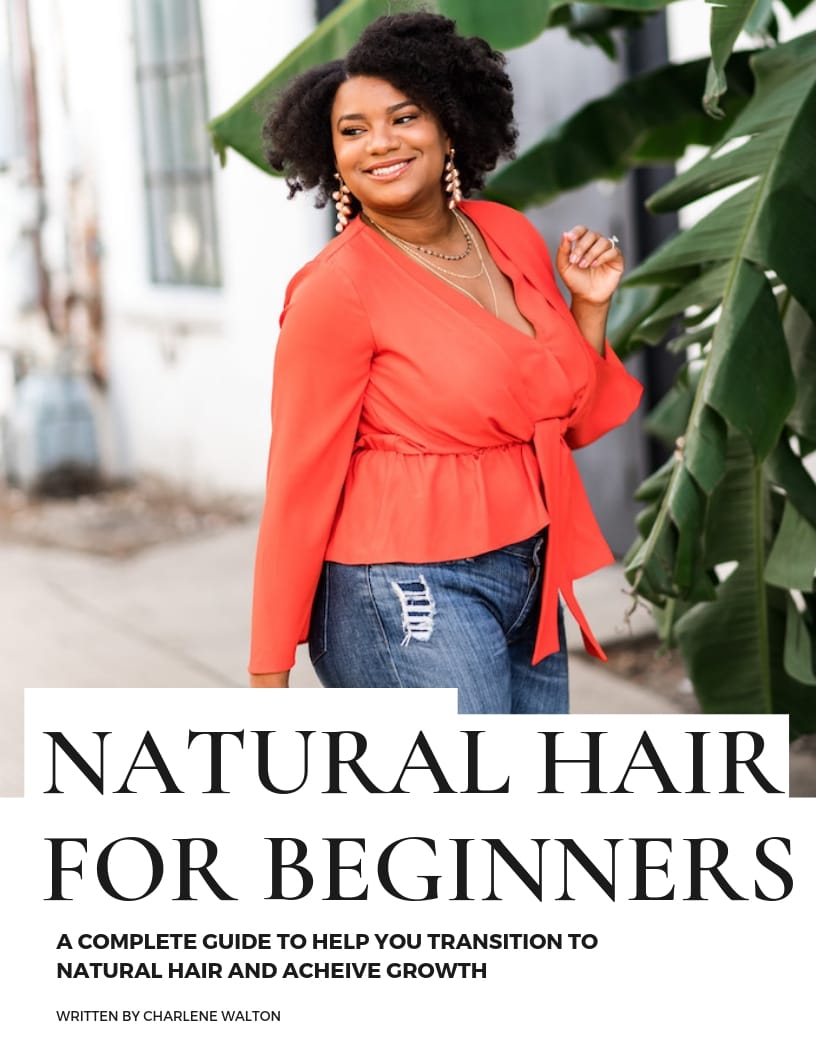
914
Shares
Share
Pin
793
Charlene Walton McCraney is a Dallas beauty and lifestyle blogger. After years of styling her and several friends’ hair as a hobby, offering advice and tips, she decided to combine two of her favorite things…writing and talking about natural hair!
TexturedTalk.com was created to promote healthy hair care for women of all textures and has since evolved into other beauty and lifestyle topics. Charlene loves teaching other aspiring bloggers on how to take their passion and turn it into amazing content to provide value.
Charlene is a previous beauty contributor to NaturallyCurly.com, CurlyNikki.com, and 21ninety.com.
When she’s not blogging she is probably crunching numbers as a Senior Financial Analyst, dancing or figuring a way to meet Beyonce in person. 🙂
Find me on: | Instagram |

















![Toni Kroos là ai? [ sự thật về tiểu sử đầy đủ Toni Kroos ]](https://evbn.org/wp-content/uploads/New-Project-6635-1671934592.jpg)


